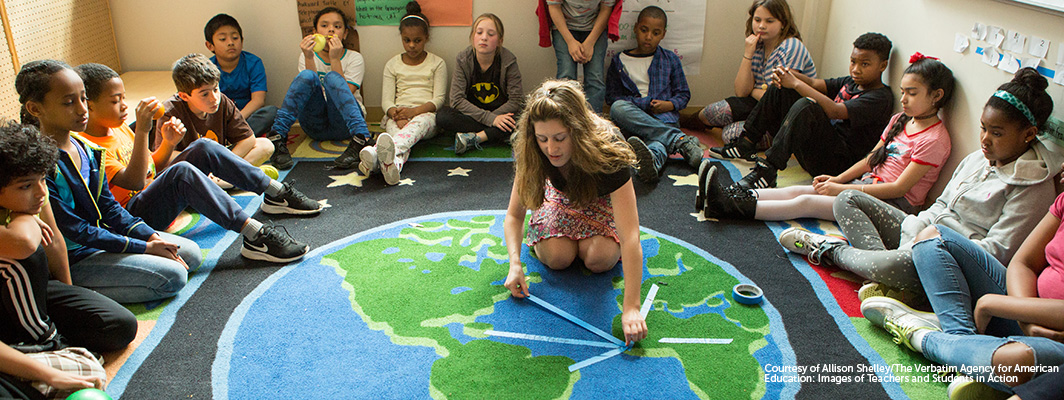
This year, the education world has been turned upside down. Since the education system has gone virtual, we no longer get the opportunity to see and watch our students grow in person.
We have grieved the loss of our school year for the past several months, and we still have more to go. Now we have to accept where we are and prepare for whatever comes next. In order to prepare, we need to consider how this experience may have changed our students: How have elementary learners grown through this experience, and how do we as educators adapt to meet their new needs?
We need to consider the possibility that when our students return, they will be more independent than they were when they left, and they will show us agency over their own learning.
As we know, every student has a different home life. However, even the best-resourced parents have struggled to help their students in this new home academic setting. Many parents at my elementary school have shared that their child uses technology better than they do. I, myself, have even struggled with some of the modern methods of basic math taught in the elementary school.
Students may show signs of having been the teacher of the adults in their house as opposed to the student of their parents. Students are sharing what they need in order to be successful. They are going beyond the required material to seek out more information on what interests them. When the material presented to them does not meet their needs, they are going online to find clarity.
Let’s embrace this newfound agency this fall, while still supporting those who are building their independent learning skills. Resources like the Challenge Based Learning framework, tools such as Teams, Flipgrid, Pear Deck (especially in student-paced mode), and Wakelet, and this blog post about creating authentic distance learning in science class can help us prepare for this new type of work. When evaluating edtech tools, look for those that are certified as research-based to support the needs of the diverse learners in your classrooms and schools.
As a parent, I have watched my own boys become more responsible in their use of time. Without much pressure from their parents, they get up each morning, get right to their schoolwork, and finish it with enough time to do whatever they would like to do with the rest of their day.
As a principal, I’ve heard parents in my elementary school share how their children have asked to start their schoolwork a day early in order for them to do something enjoyable the next day that would take more time. Some parents have also learned that their children may want to do assignments later in the day, and letting them learn at these times works best for them.
It appears that when children are given responsibility for their own time without an adult dictating the required timeframe, they often can make even better decisions than we can.
In the fall, leverage this time management to create more opportunities for student-directed learning. Some resources that support student-driven learning include Maker Learning Pedagogies and Practices, Teams, OneNote, and Pear Deck. Additionally, sending a survey or form through sites like Google Forms or SurveyMonkey can allow students to reflect on how they use their time.
When we consider digital-age skills, we often discuss the need to have opportunities for learners to be creative. With the continuous rush of a traditional school day, many times those opportunities fall by the wayside. Now, almost daily, I receive some sort of artwork, video production, or new creative product from students at my school. It appears the time at home has brought out the creative process in our students to a level rarely matched in a “normal” school day. Similarly, educators are able to create more project-based learning opportunities for students that encourage creativity in the way students share and display their learning and comprehension.
Through the use of edtech, I have seen my students create posts of themselves singing, dancing, playing instruments, performing plays, and more. Obviously, our students value the arts in a higher regard than has often been afforded to them.
Let’s continue to leverage opportunities for students to engage in learning in creative ways by using tools like Flipgrid and TikTok, which can be set to allow learners to only create content rather than viewing it by using the parental controls. Also, over the summer, explore micro-credentials that can be earned outside the classroom and look out for Digital Learning micro-credentials, which are coming soon to the Digital Promise Micro-credential Platform, to prepare for project-based and student-centered learning.
So what does this all mean to us as educators? How is this going to change our way of teaching and learning when we get back to our school buildings?
Teachers need to be prepared to meet these “new and improved” elementary students. They need to be prepared to use apps such as TikTok, YouTube, and Zoom. They need to be prepared to not expect the classroom to ever look the same again; this opportunity to truly reimagine the classroom is our silver lining.
Explore the Edtech Marketplace Today blog series to hear other voices from the field share important perspectives on challenges and strategies around technology use for learning, and learn more about Digital Promise’s product certifications.